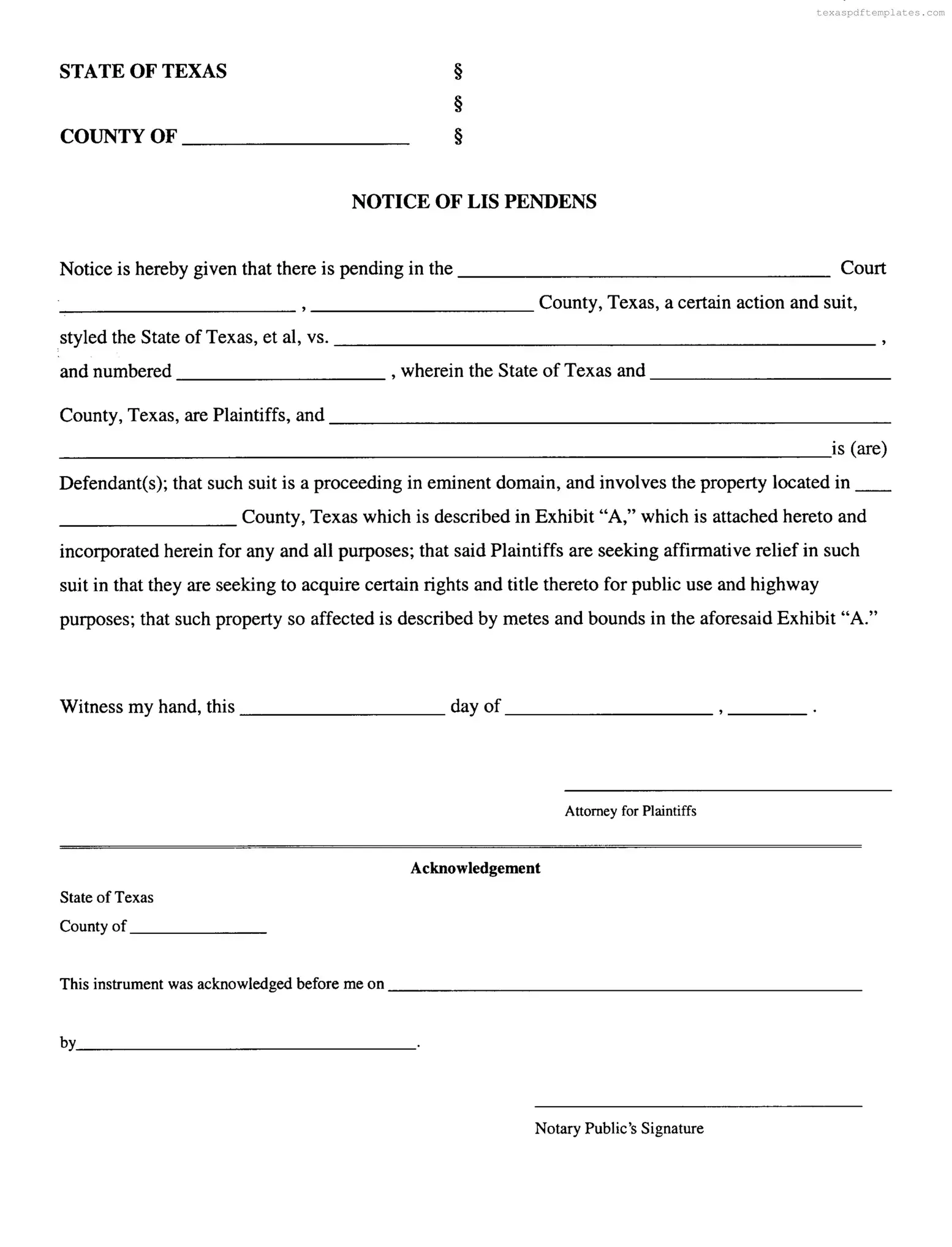Blank Lis Pendens Texas PDF Template
The Lis Pendens Texas form serves as a public notice that a legal action is pending concerning a specific property. This notice informs interested parties that the property may be affected by the outcome of the case, which often involves eminent domain proceedings. By filing this form, plaintiffs assert their claim to the property and seek to acquire certain rights for public use.
Open Form

